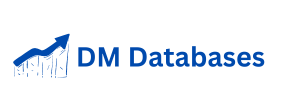Outbound link logging The access logs of most web servers store detailed information about where visitors came from and how they navigated the hosted site. However, they do not record which linking visitors are left behind. This is because the visitor’s browser does not need to communicate with the origin final server when the visitor clicks on an exit link. Links on a site can point to URLs on the original website’s domain which automatically redirect to their actual target. This technique has the downside of delays caused by additional requests to the original website server. Beca use these Additional requests will leave traces in server logs, revealing which links were followed, giving rise to privacy concerns.
Long URLsWeb applications often include
Long descriptive attributes in URLs that Oman Phone Number List represent data hierarchies, command structures, transaction paths, and information. This practice results in URLs that are hard to remember. Redirect will direct the user from a long URL to a shorter one.
URL changesSometimes the page URL changes even though the content remains the same. Therefore, URL redirection can help users who have bookmarks.
Device targeting and geo targeting
Redirects can be used effectively for targeting purposes such as device targeting or geotargeting. Device targeting has become even more important with the advent of mobile clients.
There are two approaches to serving mobile users:
Make the website responsive or redir ect to the mobile DM Databases website version. If a mobile website version is offered, users with mobile clients will be automatically forwarded to the appropriate mobile content. For device targeting, client-side redirects or non-cacheable server-side redirects are used. Geotargeting aims to offer localized content and auto atically forward users to the localized version of the requested URL. This is useful for websites that target audiences in more than one location or language.
Manipulating visitors
URL redirects are sometimes used as part of phishing attacks to confuse visitors as to which website they are visiting. Since modern browsers always display the actual URL in the address bar.







